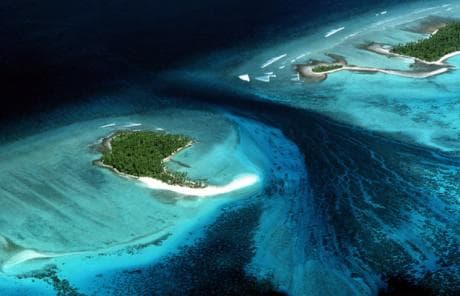Global Shield boosts climate resilience in Pacific Islands with €10m contribution – Reinsurance News
Global Shield boosts climate resilience in Pacific Islands with €10m contribution Reinsurance News


The Global Shield against Climate Risks
The Global Shield against Climate Risks has supported climate-vulnerable communities of Pacific Island Countries (PICs) through a €10 million contribution by the German Ministry for Economic Cooperation and Development (BMZ), dedicated to the Pacific Catastrophe Risk Insurance Company (PCRIC).
Supporting Climate-Vulnerable Communities
 PICs have become increasingly vulnerable due to the worsening effects of climate change, exposing them to a range of natural disasters such as tropical cyclones, droughts, and floods. This grant agreement aims to bolster the resilience of PICs by collectively reducing risks and ensuring rapid access to funds during emergencies.
PICs have become increasingly vulnerable due to the worsening effects of climate change, exposing them to a range of natural disasters such as tropical cyclones, droughts, and floods. This grant agreement aims to bolster the resilience of PICs by collectively reducing risks and ensuring rapid access to funds during emergencies.
Improving Access to Financial Protection
With funding from the Global Shield Solutions Platform (GSSP), PCRIC can offer premium support to member countries, thereby improving access to pre-arranged financial protection through the Pacific risk pool.
Ensuring Swift Relief Efforts
The primary objective is to ensure the availability of funds, enabling governments to swiftly initiate relief efforts in the aftermath of a disaster.
Emphasis on Sustainable Development Goals (SDGs)
Dr. Annette Detken, head of the Global Shield Solutions Platform, emphasizes, “Pacific Island Countries are among the most climate vulnerable in the world, with related damage estimated at around 10% of their GDP, or USD 1 billion annually. As climate hazards intensify across the Pacific region, the significance of climate disaster risk finance and insurance becomes increasingly evident.”
“By providing parametric insurance products, PCRIC assists PICs and their vulnerable populations in delivering reliable and timely fund disbursement and facilitates the inflow of disaster response capital to the region in the aftermath of a disaster,” Detken adds.
Appreciation for Partnership
Shiri Krishna Gounder, Permanent Secretary for the Ministry of Economy Fiji, states, “Fiji appreciates the partnership between the Global Shield Solutions Platform and PCRIC, which will bolster our efforts in disaster risk financing. With increased financial support, we can better prepare for and respond to the adverse impacts of climate change, safeguarding our vulnerable communities and fostering resilience.”
Saoleititi Maeva Betham-Vaai, CEO for Ministry of Finance, Samoa, highlights, “Samoa is grateful to have a regional institution like PCRIC dedicated to disaster risk finance. However, we recognize that PCRIC alone cannot address all our disaster risk finance needs. Comprehensive protection requires a blend of financial instruments and strategies.”
H.E. Kilisitina Tuaimei’api, CEO for Ministry of Finance, Tonga, underscores, “Tonga’s unwavering support for PCRIC comes from our firsthand experience of the benefits. We have been the highest recipient of payouts following multiple cyclones. Our enduring partnership symbolizes our shared commitment to building a resilient future for Tonga’s communities by accessing DRF instruments such as PCRIC’s parametric insurance, to supplement our fiscal balances when a disaster strikes.”
SDGs, Targets, and Indicators
| SDGs | Targets | Indicators |
|---|---|---|
| SDG 13: Climate Action | Target 13.1: Strengthen resilience and adaptive capacity to climate-related hazards and natural disasters in all countries | Indicator not mentioned in the article |
| SDG 17: Partnerships for the Goals | Target 17.17: Encourage and promote effective public, public-private, and civil society partnerships, building on the experience and resourcing strategies of partnerships | Indicator not mentioned in the article |
1. Which SDGs are addressed or connected to the issues highlighted in the article?
The issues highlighted in the article are connected to SDG 13: Climate Action and SDG 17: Partnerships for the Goals.
2. What specific targets under those SDGs can be identified based on the article’s content?
- Under SDG 13: Climate Action, the specific target that can be identified is Target 13.1: Strengthen resilience and adaptive capacity to climate-related hazards and natural disasters in all countries.
- Under SDG 17: Partnerships for the Goals, the specific target that can be identified is Target 17.17: Encourage and promote effective public, public-private, and civil society partnerships, building on the experience and resourcing strategies of partnerships.
3. Are there any indicators mentioned or implied in the article that can be used to measure progress towards the identified targets?
No specific indicators are mentioned or implied in the article that can be used to measure progress towards the identified targets.
Behold! This splendid article springs forth from the wellspring of knowledge, shaped by a wondrous proprietary AI technology that delved into a vast ocean of data, illuminating the path towards the Sustainable Development Goals. Remember that all rights are reserved by SDG Investors LLC, empowering us to champion progress together.
Source: reinsurancene.ws

Join us, as fellow seekers of change, on a transformative journey at https://sdgtalks.ai/welcome, where you can become a member and actively contribute to shaping a brighter future.







